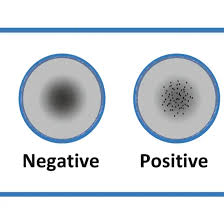What is VDRL test?

The VDRL test (Venereal Disease Research Laboratory test) is a blood test used to screen for syphilis, a sexually transmitted infection caused by the bacterium Treponema pallidum. It’s a type of non-treponemal test, meaning it identifies antibodies produced by the body in response to cell damage caused by syphilis, rather than antibodies against the bacterium itself.
Table of Contents
Principle of the VDRL Test
The VDRL test works by detecting reagin antibodies, which the body produces in response to cell damage caused by the syphilis infection. When someone is infected with Treponema pallidum, these antibodies are created. The test identifies these antibodies through a visible reaction between the antibodies in the blood and certain test reagents.
In the test, the patient’s serum (the liquid part of blood) or cerebrospinal fluid (for suspected neurosyphilis cases) is combined with an antigen designed to mimic the damaged cells’ lipid components. If the serum contains antibodies, they will bind to the antigen and form clumps (a process called flocculation), which indicates a positive result.
Procedure of the VDRL Test
The VDRL test is straightforward, involving the following steps:
Sample Collection: A small blood sample is drawn from the patient. If neurosyphilis is suspected, cerebrospinal fluid (CSF) is collected instead.
Sample Preparation: The blood is processed to extract the serum, which is then used for testing. CSF can be tested directly.
Reagent Addition: The serum or CSF is placed on a slide, and a special antigen (made of cardiolipin, cholesterol, and lecithin) is added.

Mixing: The sample and antigen are gently mixed on the slide.
Observation: After mixing, the slide is examined under a microscope to check for clumping (flocculation).
Interpretation: The test is deemed positive if clumping is observed, indicating the presence of antibodies. A negative result means no clumping occurs.
Result Interpretation

The VDRL test results are interpreted as either positive or negative, with further testing sometimes required to determine the antibody concentration.
Positive Result
When clumping occurs, it suggests syphilis antibodies are present, which usually points to an infection. However, a positive result doesn’t always confirm syphilis as certain conditions like pregnancy, lupus, or malaria can also trigger false positives.
Titers
A positive result may lead to a titer test, which measures the concentration of antibodies in the blood. High titers usually indicate active syphilis, while decreasing titers suggest the infection is being successfully treated.
Negative Result
If no clumping occurs, the test is negative, meaning no antibodies have been detected. However, a negative result can sometimes occur in the early or late stages of syphilis, as antibody levels may be too low to detect.
False Positives and Negatives
False-positive results may occur due to other conditions like autoimmune diseases, acute infections, or pregnancy. False-negative results are also possible in the very early or late stages of syphilis when antibody levels may be too low for detection. For accurate diagnosis, a treponemal test (such as the FTA-ABS) is typically performed after a positive VDRL test.
Applications of the VDRL Test
The VDRL test serves several important purposes:
Syphilis Screening
It is commonly used as an initial screening tool for syphilis, particularly in routine medical exams, during pregnancy, and for blood donations. Its low cost and simplicity make it ideal for large-scale testing.
Monitoring Treatment
For individuals diagnosed with syphilis, the VDRL test helps track the response to treatment. As syphilis is treated, the levels of antibodies generally decrease, which can be measured using titers.
Diagnosing Neurosyphilis
When syphilis spreads to the nervous system, causing neurosyphilis, the VDRL test can be performed on cerebrospinal fluid (CSF) to assist in diagnosis. A positive result in the CSF strongly suggests neurosyphilis.
Staging the Disease
While the VDRL test itself cannot determine the exact stage of syphilis (primary, secondary, or latent), the results, when combined with other clinical assessments and tests, can help doctors understand the stage of the disease.
Conclusion
In summary, the VDRL test is an essential tool for the detection and monitoring of syphilis. Though it has limitations such as the possibility of false positives or negatives, its quick, inexpensive, and simple process makes it a valuable first step in syphilis screening. Positive results should always be confirmed by more specific treponemal tests to ensure accurate diagnosis.
Frequently Asked Questions (FAQ)
What do you mean by serum?
The clear, yellowish liquid portion of blood that is left over after clotting is called serum. It is high in proteins, electrolytes, and antibodies but low in blood cells and clotting factors.
Define syphilis?
Syphilis is a sexually transmitted infection caused by the bacterium Treponema pallidum, which progresses through different stages and can affect the skin, mucous membranes, and internal organs if not treated.
Related Articles




